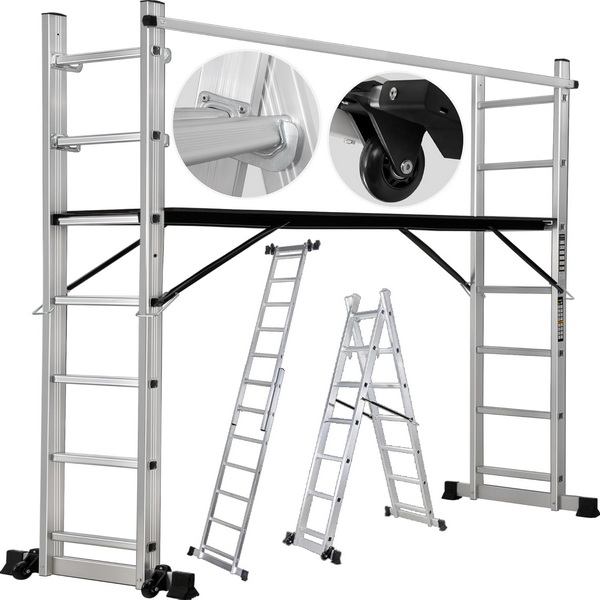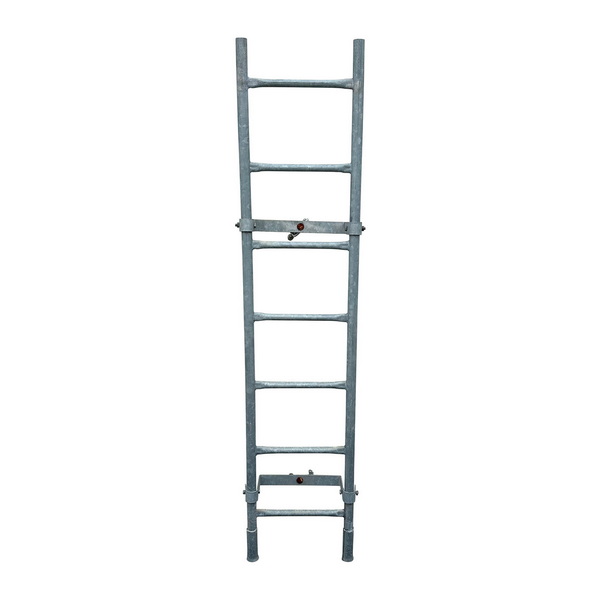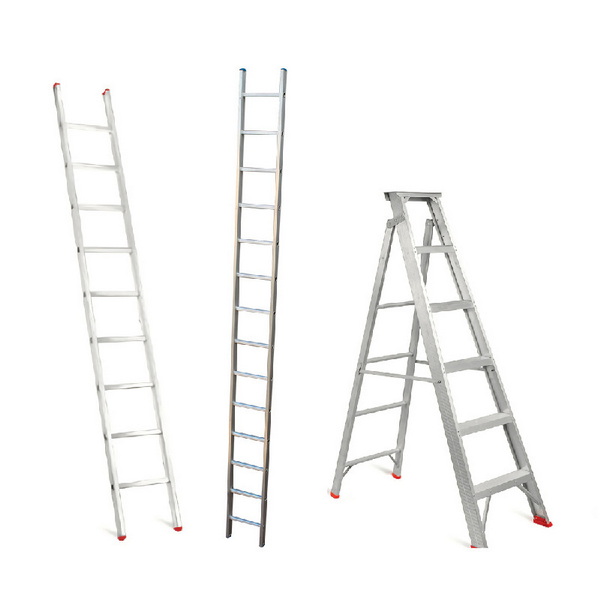Content Menu
● What Is Aluminum Ladder Scaffolding?
● Why Choose Aluminum Ladder Scaffolding for DIY Projects?
>> Key Benefits
● Types of Aluminum Ladder Scaffolding
● Safety Features of Aluminum Ladder Scaffolding
● Setting Up Aluminum Ladder Scaffolding Safely
>> Step-by-Step Guide
● Advanced Assembly Techniques
● Understanding Load Capacity
>> Factors Affecting Load Capacity
● The Role of Bracing in Scaffolding Stability
>> Types of Bracing
● Using Scaffolding on Different Surfaces
● Integrating Safety Accessories
● Training and Certification
>> Key Training Topics
● Maintaining Your Aluminum Ladder Scaffolding
>> Maintenance Checklist
● Case Studies: Safe Scaffolding Practices in DIY Projects
>> Case Study 1: Exterior Painting
>> Case Study 2: Interior Drywall Installation
● Common Hazards and How to Avoid Them
● Best Practices for DIYers Using Aluminum Ladder Scaffolding
● Aluminum Ladder Scaffolding vs. Traditional Ladders
● Legal and Regulatory Considerations
● Environmental and Ergonomic Benefits
● Choosing the Right Aluminum Ladder Scaffolding
● Conclusion
● FAQ
>> 1. What makes aluminum ladder scaffolding safer than a regular ladder?
>> 2. How do I ensure my aluminum ladder scaffolding is safe before use?
>> 3. Can I use any ladder with aluminum scaffolding?
>> 4. What are the most common accidents related to aluminum ladder scaffolding?
>> 5. Are there legal safety requirements for aluminum ladder scaffolding in DIY projects?
Aluminum ladder scaffolding has become a popular choice for DIY enthusiasts who need to work at height safely and efficiently. But how safe is it, really? This comprehensive guide explores the safety aspects, proper usage, benefits, and potential risks of aluminum ladder scaffolding for DIY projects.

What Is Aluminum Ladder Scaffolding?
Aluminum ladder scaffolding is a temporary structure made primarily from lightweight aluminum, designed to provide a stable platform for working at heights. Unlike traditional ladders, it offers a broader base, integrated guardrails, and often wheels for mobility, making it especially attractive for home renovators and DIYers.
Why Choose Aluminum Ladder Scaffolding for DIY Projects?
Key Benefits
- Lightweight and Portable: Aluminum is much lighter than steel, making the scaffolding easy to move and set up, even for one person.
- Rust-Resistant: Aluminum does not rust, making it ideal for both indoor and outdoor projects.
- Stable Platform: Provides a wide, stable working area, reducing the risk of falls compared to narrow ladders.
- Space for Tools: Platforms allow you to keep tools and materials close at hand, minimizing trips up and down.
- Adjustable Height: Many systems allow for height adjustments to suit various project needs.
Types of Aluminum Ladder Scaffolding
| Type |
Description |
Best Use Case |
| Single Ladder Scaffolding |
Platform rests on two parallel ladders; simple and easy to build |
Light work at low heights |
| Double Ladder Scaffolding |
Two ladders with cross planks for added stability |
Medium-level work |
| Rolling Scaffolding |
Equipped with wheels for easy movement |
Indoor projects, flat surfaces |
| Folding Scaffolding |
Compact and portable, easy to store |
Small projects, limited storage |
| Adjustable Height Scaffolding |
Height can be changed to suit the task |
Versatile, multi-level projects |
Safety Features of Aluminum Ladder Scaffolding
- Guardrails and Toe Boards: Prevent falls and dropped objects.
- Non-Slip Platforms: Reduce the risk of slipping while working.
- Lockable Wheels: Ensure the structure stays in place during use.
- Sturdy Bracing: Cross braces and anti-slip feet add stability.
- Integrated Access Ladders: Provide safe means of climbing onto the platform.
Setting Up Aluminum Ladder Scaffolding Safely
Step-by-Step Guide
1. Inspect All Components
- Check for damage, wear, or missing parts before assembly.
- Ensure all locking mechanisms work correctly.
2. Choose a Level Surface
- Use a spirit level to confirm the ground is flat.
- Never set up on uneven or unstable surfaces.
3. Assemble the Frame
- Follow manufacturer instructions closely.
- Secure base plates or wheels, and engage brakes if present.
4. Install Platforms and Guardrails
- Ensure platforms are fully decked and locked in place.
- Install guardrails and toe boards at every level.
5. Secure the Ladder
- Attach the ladder firmly to the frame at the recommended angle (75–80 degrees).
- Never use makeshift ladders or substitute materials.
6. Final Safety Check
- Double-check all connections and stability before climbing.
- Pro Tip: Always wear appropriate personal protective equipment (PPE) such as non-slip shoes and a hard hat.
Advanced Assembly Techniques
When dealing with more complex scaffolding systems, consider these advanced techniques to enhance stability and safety:
- Outriggers: Use outriggers for increased stability, especially on uneven surfaces or when working at greater heights.
- Tie-Ins: For tall structures, tie the scaffolding to a stable structure (like a building) to prevent tipping.
- Leveling Jacks: Adjustable leveling jacks allow for precise height adjustments on each leg, ensuring a perfectly level platform even on sloped ground.

Understanding Load Capacity
Load capacity is one of the most crucial safety factors. Always refer to the manufacturer's specifications to determine the maximum weight the scaffolding can support. Consider the combined weight of the worker, tools, and materials. Distribute the load evenly across the platform to prevent stress on any single point.
Factors Affecting Load Capacity
- Material Quality: High-grade aluminum increases load-bearing capabilities.
- Design and Construction: Robust designs with strong welds and secure connections provide greater load capacity.
- Platform Type: Solid wood or reinforced aluminum platforms can handle heavier loads compared to mesh or open designs.
The Role of Bracing in Scaffolding Stability
Bracing is essential for preventing lateral movement and maintaining structural integrity. Cross braces, horizontal braces, and vertical braces work together to distribute weight and withstand external forces, such as wind or movement.
Types of Bracing
- Cross Braces: Diagonal braces connecting vertical frames to prevent racking.
- Horizontal Braces: Connect frames at platform level to prevent inward or outward movement.
- Vertical Braces: Additional supports for uprights, especially for taller scaffolding.
Using Scaffolding on Different Surfaces
- Concrete: Generally stable, but check for cracks or unevenness. Use base plates to distribute weight.
- Grass: Can be unstable, especially when wet. Use mud sills or wider base plates to prevent sinking.
- Asphalt: Can soften in hot weather. Use solid base plates to prevent legs from sinking.
- Sloped Surfaces: Use adjustable leveling jacks to maintain a level platform. Consider tie-ins for added stability.
Integrating Safety Accessories
Various safety accessories can further enhance the safety of aluminum ladder scaffolding:
- Tool Lanyards: Prevent dropped tools by attaching them to your wrist or harness.
- Debris Netting: Enclose the scaffolding to contain dust, debris, and small tools, protecting people below.
- Warning Signs: Place signs around the work area to alert others to overhead work and potential hazards.
- Lighting: Adequate lighting is essential for safe work, especially in dimly lit areas or during evening hours.
Training and Certification
While DIY projects might not require formal certification, understanding proper scaffolding practices is essential. Watch instructional videos, read safety manuals, and consider taking a short course on scaffolding safety.
Key Training Topics
- Scaffolding Components and Terminology: Understand the function of each part.
- Assembly and Disassembly Procedures: Follow manufacturer's instructions precisely.
- Load Capacity and Weight Distribution: Know the limits and how to distribute weight evenly.
- Fall Protection Measures: Use guardrails, toe boards, and personal fall arrest systems when necessary.
- Emergency Procedures: Know what to do in case of an accident or structural failure.
Maintaining Your Aluminum Ladder Scaffolding
Regular maintenance is crucial for ensuring the longevity and safety of your scaffolding.
Maintenance Checklist
- Cleaning: Remove dirt, debris, and chemicals after each use.
- Lubrication: Lubricate moving parts (wheels, locks, adjustable components) regularly.
- Inspection: Check for cracks, bends, corrosion, and wear on all components.
- Repair or Replacement: Replace damaged parts immediately. Do not use makeshift repairs.
- Storage: Store scaffolding in a dry, protected area to prevent corrosion and damage.
Case Studies: Safe Scaffolding Practices in DIY Projects
Case Study 1: Exterior Painting
A homeowner used aluminum ladder scaffolding to paint the exterior of their two-story house. They followed these safety practices:
- Inspected all components before assembly.
- Set up on a level concrete surface with base plates.
- Installed guardrails and toe boards on all platform levels.
- Used tool lanyards to prevent dropped tools.
- Took regular breaks to avoid fatigue.
The result was a safe and efficient painting project with no accidents or injuries.
Case Study 2: Interior Drywall Installation
A DIYer used rolling aluminum scaffolding to install drywall in their basement. They adhered to these safety measures:
- Locked the wheels of the scaffolding before each work session.
- Ensured the platform was clear of obstructions.
- Avoided overloading the platform with excessive drywall sheets.
- Used a spotter to help move the scaffolding safely around the room.
The project was completed without incident, thanks to careful planning and adherence to safety guidelines.
Common Hazards and How to Avoid Them
| Hazard |
Prevention Tips |
| Falls from height |
Always use guardrails, toe boards, and secure platforms. |
| Scaffold collapse |
Inspect for damage, ensure proper assembly, and do not exceed weight limits. |
| Slipping or tipping |
Set up on level ground, use anti-slip feet, and lock wheels. |
| Overreaching |
Move the scaffold instead of leaning too far. |
| Dropped tools/materials |
Use toe boards and keep work area organized. |
Best Practices for DIYers Using Aluminum Ladder Scaffolding
- Follow Manufacturer Instructions: Always read and adhere to the assembly and usage guidelines.
- Don't Exceed Weight Limits: Know the load capacity (typically 200–250 kg for most aluminum systems).
- Inspect Before Each Use: Look for cracks, bends, or missing parts every time you set up.
- Use Proper Access: Only use ladders designed for the scaffold; never improvise.
- Comply with Local Regulations: Check OSHA or equivalent standards for safety requirements.
Aluminum Ladder Scaffolding vs. Traditional Ladders
| Feature |
Aluminum Ladder Scaffolding |
Traditional Ladder |
| Stability |
High (wide base, guardrails) |
Lower (narrow base, no guardrails) |
| Platform Space |
Large, allows tools/materials |
Limited |
| Height Flexibility |
Adjustable, multi-level |
Fixed or limited adjustment |
| Mobility |
Often has wheels for easy movement |
Must be carried and repositioned |
| Weight |
Lightweight |
Lightweight |
| Safety |
Superior for extended work at height |
Adequate for short, low tasks |
Legal and Regulatory Considerations
- Guardrails Required: For platforms over 10 feet, guardrails are mandatory in many regions.
- Proper Ladder Attachment: Ladders must be securely attached to scaffolding frames.
- Regular Inspections: Required by law in many areas for ongoing projects.
- Insurance Implications: Failure to comply with safety standards can void insurance claims.
Environmental and Ergonomic Benefits
- Reduced Fatigue: Standing on a wide platform is less tiring than balancing on ladder rungs.
- Fewer Trips Up and Down: Tools and materials can be kept on the platform, saving time and reducing risk.
- Lower Injury Rates: The stable base and guardrails significantly reduce the likelihood of slips and falls.
Choosing the Right Aluminum Ladder Scaffolding
- Assess Project Requirements: Height, indoor/outdoor use, frequency, and weight capacity.
- Check for Safety Features: Guardrails, toe boards, non-slip platforms, and lockable wheels.
- Consider Storage Needs: Folding or modular designs are best for limited space.
- Buy Quality Products: Avoid uncertified or cheap scaffolding that may compromise safety.
- Read Reviews and Warranties: Choose reputable brands with good customer support.
Conclusion
Aluminum ladder scaffolding, when chosen wisely and used correctly, is a safe and practical solution for most DIY projects that require working at height. Its combination of lightweight portability, stability, and integrated safety features makes it far superior to traditional ladders for extended or complex tasks. However, safety ultimately depends on proper setup, regular inspection, adherence to regulations, and using the right equipment for the job. By following best practices and manufacturer guidelines, DIYers can minimize risks and complete projects more efficiently and safely.

FAQ
1. What makes aluminum ladder scaffolding safer than a regular ladder?
Aluminum ladder scaffolding offers a wider, stable platform with guardrails and toe boards, significantly reducing the risk of falls compared to the narrow rungs and lack of barriers on regular ladders.
2. How do I ensure my aluminum ladder scaffolding is safe before use?
Inspect all components for damage, ensure the base is level and secure, install guardrails and toe boards, attach the ladder firmly, and check for overall stability before climbing.
3. Can I use any ladder with aluminum scaffolding?
No, only ladders specifically designed for scaffolding should be used. They must be compatible with the scaffold system and securely attached to prevent slips or falls.
4. What are the most common accidents related to aluminum ladder scaffolding?
Common accidents include falls due to unsecured ladders, overreaching, instability, overloading, and injuries from improper assembly or structural failure.
5. Are there legal safety requirements for aluminum ladder scaffolding in DIY projects?
Yes, many regions require guardrails for platforms over 10 feet, proper ladder attachment, and the use of fall protection equipment. Always check local regulations and OSHA or equivalent safety standards.






















